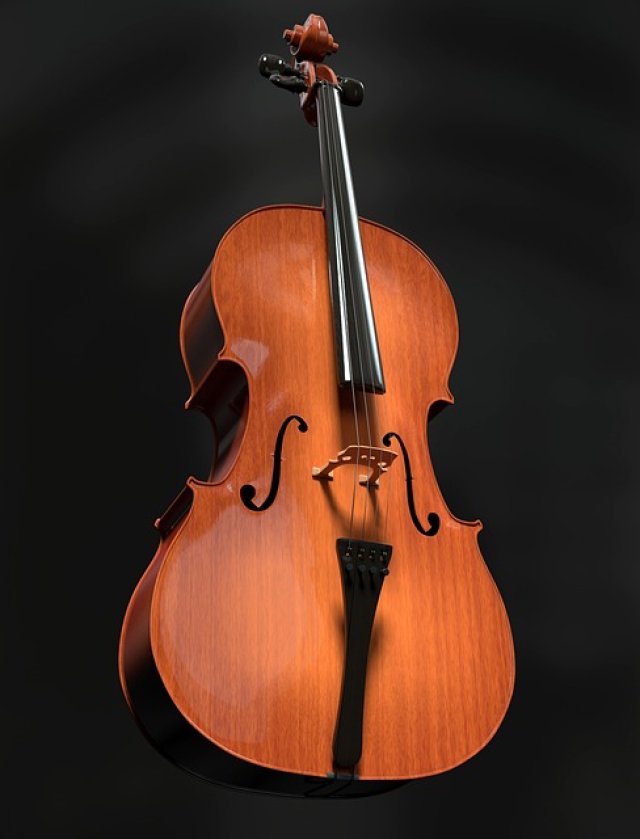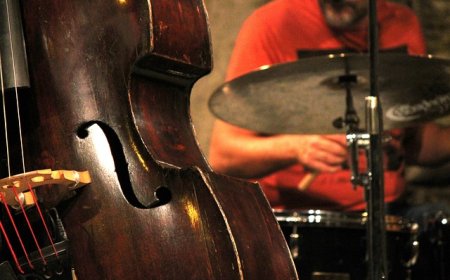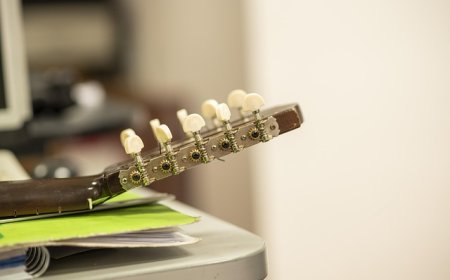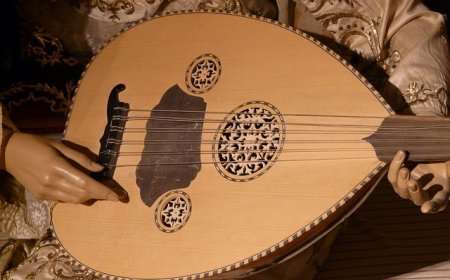Cello Facts for Kids – History, Technique & Sound
Learn about the cello for kids. Discover its history, how it’s played, rich deep sound, and its role in orchestras, chamber music, and solo performances

🎻 All About the Cello
🥇 Introduction
The cello, short for violoncello, is a large string instrument with a deep, rich sound. It's bigger than the violin and viola and plays in the tenor and bass ranges. The cello is known for its ability to play both beautiful melodies and powerful harmonies, making it one of the most expressive instruments in classical and modern music. From orchestras to solo performances to film soundtracks, the cello's voice is often described as closest to the human voice.
🎶 What Is a Cello?
A cello is a bowed string instrument with four strings, tuned from low to high as C, G, D, A. It's larger than the violin and viola and is played while seated, with the instrument resting between the player's knees and supported by an endpin on the floor.
The cello has a wide range of sound. It can play low, growling bass notes or high, singing melodies. That makes it important in all parts of the orchestra: as a soloist, a harmonizer, and even as part of the rhythm section.
🧩 Parts of the Cello
The cello has many carefully crafted parts that help it create such a powerful and beautiful sound:
-
Body - The large, hollow wooden box that amplifies the sound
-
Strings - Four metal-wrapped strings tuned in fifths
-
Fingerboard - A smooth black surface where fingers press down to change pitch
-
Bow - A wooden stick with horsehair used to play the strings
-
Bridge - The curved wooden piece that holds the strings up and transfers vibrations
-
F-holes - Openings on the body that allow sound to escape
-
Scroll - The top decorative part of the cello's neck
-
Pegs - Used to tune the strings
-
Fine Tuners - Small screws that adjust pitch more precisely
-
Endpin - A metal spike at the bottom that supports the cello on the floor
⚙️ How Does the Cello Work?
The cello creates sound when a player draws a bow across the strings or plucks them with their fingers. This causes the strings to vibrate, sending energy into the bridge, and then through the body of the cello, which amplifies the sound.
The left hand presses down on the fingerboard to change the pitch, while the right hand controls the bow or plucking. The cello's large size allows it to play a wide range of notes and express a full range of emotions-from soft and gentle to loud and intense.
📜 History of the Cello
The cello was developed in Italy in the 1500s as part of the violin family. It replaced earlier bass instruments like the viola da gamba, offering better sound and more power.
By the Baroque era, composers like Bach and Vivaldi were writing music for the cello. In the Classical and Romantic eras, it became a beloved solo instrument, with famous concertos written by Haydn, Schumann, Elgar, and Dvořák.
In the 20th century, the cello appeared in jazz, rock, film scores, and pop music. Today, it's played in all types of music-from solo pieces to string quartets to full symphonies.
🥁 Famous Cello Players
Some incredible musicians have made the cello famous across the world:
-
Yo-Yo Ma - One of the most celebrated cellists of all time, known for classical and world music
-
Pablo Casals - Revived the cello as a solo instrument and rediscovered Bach's cello suites
-
Jacqueline du Pré - British cellist known for her emotional and powerful playing
-
Mischa Maisky - A dynamic soloist with a passionate style
-
Sol Gabetta - Modern cellist who performs worldwide
-
Luka Šulić & Stjepan Hauser (2Cellos) - Duo known for rock covers played on cello
-
Apocalyptica - A cello metal group from Finland
🎶 Learning to Play the Cello
Learning the cello is exciting and rewarding! It helps students build:
-
Strong hand coordination
-
Good posture and listening skills
-
An understanding of musical harmony and rhythm
Beginners learn:
-
How to hold the cello and bow properly
-
Playing open strings and easy finger positions
-
Using smooth bow strokes and different bow speeds
-
Playing songs in bass clef (and eventually tenor and treble clef)
-
Joining ensembles and learning to play with others
Cellos come in different sizes, so even young children can start with a 1/4 or 1/2 size cello and grow with their instrument.
😄 Fun Facts About the Cello
-
The cello's full name is violoncello, which means "little large viol."
-
Cellists usually sit while playing, using an endpin to support the instrument.
-
Some of the most famous movie soundtracks feature solo cello melodies.
-
The lowest string on the cello is the C string-deep and rumbling!
-
The cello is often used to mimic the human voice because of its expressive tone.
-
Cellos are made from aged wood, often spruce and maple, for the best sound.
-
You can plug electric cellos into amplifiers and effects pedals for cool sounds!
👧 Kid-Friendly Summary
The cello is a big string instrument that you play while sitting down. It has four strings and makes low, rich sounds. You use a bow or your fingers to play it. The cello can play sad songs, exciting parts in movies, or even fun rock covers. It's a great instrument for anyone who loves warm, deep music!
📚 Vocabulary Words
Cello – A large string instrument with a deep sound, played sitting down
Endpin – A metal rod at the bottom of the cello that rests on the floor
Bow – A stick with horsehair used to play the strings
Fingerboard – The part where you press down on the strings
Bridge – The wooden piece that holds the strings and sends sound to the body
F-holes – Openings in the cello that let sound out
Bass Clef – A music staff used for low instruments like the cello
Vibrato – A small, wobbly finger motion that adds warmth to a note
❓ Interactive Quiz (8 Questions)
1. What family of instruments does the cello belong to?
A. Brass
B. Woodwind
C. Percussion
D. String
2. How many strings does a cello have?
A. Two
B. Four
C. Six
D. Eight
3. What is the name of the lowest string on the cello?
A. G
B. A
C. C
D. D
4. What do cellists sit on while playing?
A. Drum
B. Floor
C. Chair
D. Case
5. What part of the cello supports it on the floor?
A. Scroll
B. Chin rest
C. Peg
D. Endpin
6. Which famous cellist is known for playing Bach and world music?
A. Beethoven
B. Yo-Yo Ma
C. Mozart
D. Joshua Bell
7. What does the cello’s name mean in Italian?
A. Giant violin
B. Little large viol
C. Singing string
D. Tenor bass
8. Which music clef is most often used to write cello music?
A. Treble
B. Alto
C. Bass
D. Percussion




















































